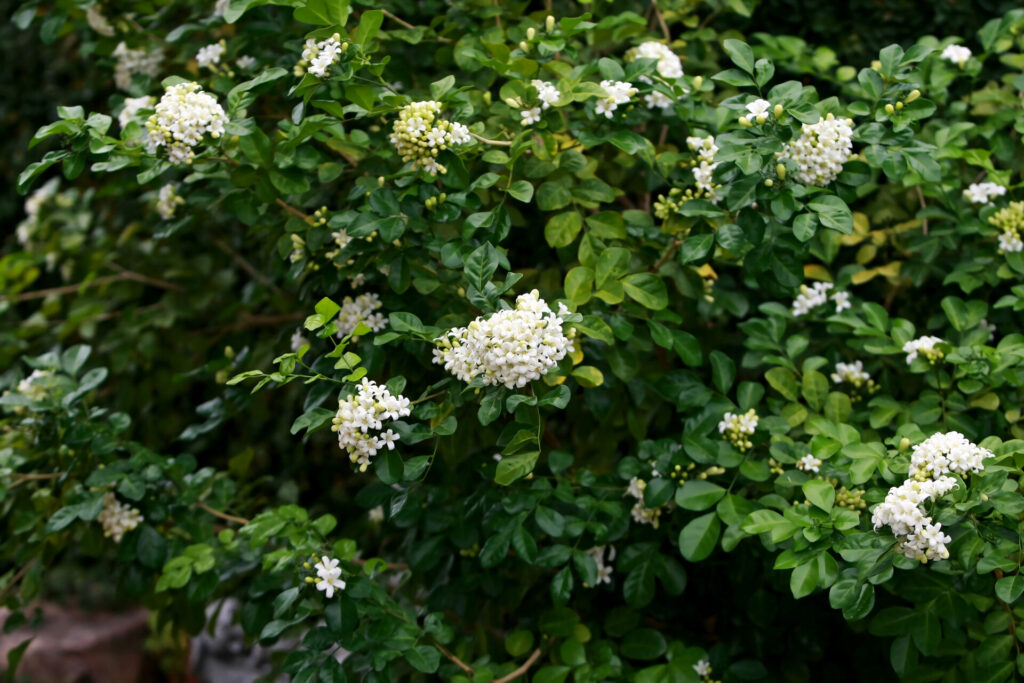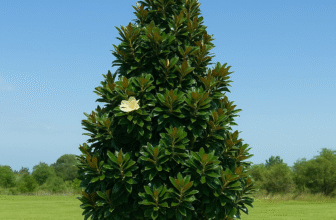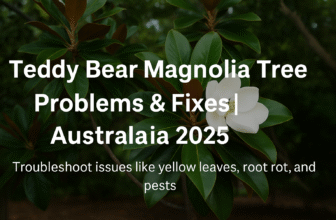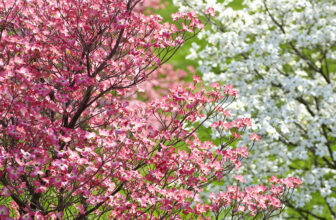Murraya hedges in Australia, also known as Orange Jasmine or Mock Orange, are one of the most loved hedging plants in Australia. With its glossy green leaves, fragrant white flowers, and fast growth, it’s perfect for creating a lush, tropical look in any garden.
Here we will discuss the best Murraya varieties and how to grow and care for them. When it comes to low-maintenance screening plants, Murraya hedges in Australia are among the most popular options for homeowners, and
We will answer common questions, all tailored for Australian gardeners.
Why Murraya Hedge is Perfect for Aussie Gardens
- Evergreen: Murraya keeps its lush green foliage throughout the year, making it ideal for consistent beauty.
- Fast-growing: In most Australian climates, it grows quickly, up to 1 metre per year, offering speedy privacy and coverage.
- Fragrant: Its small white flowers bloom mainly in spring and summer, releasing a sweet jasmine-like fragrance that fills the garden.
- Low maintenance: Once established, Murraya requires very little attention. Occasional pruning and feeding keep it healthy.
- Ideal for privacy: With dense foliage, it makes a great living screen to block neighbours, reduce noise, and add garden structure.

It suits most Australian climates, including QLD, NSW, WA, and parts of SA, especially coastal and subtropical zones.
For stylish and effective natural fencing, Murraya hedges in Australia provide both privacy and curb appeal.
Best Murraya Hedge Varieties in Australia
1. Murraya paniculata (Standard Murraya)
This is the most commonly planted type. It grows up to 3–4 metres in height if left untrimmed. It has deep green foliage and clusters of white flowers with a strong citrus scent. Perfect for taller privacy hedges and boundaries. Responds well to regular pruning and shaping.
2. Murraya paniculata’ Min-a-Min’ (Dwarf Murraya)
A compact version of the standard variety, growing to only 0.5–1 metre tall. It forms a tight, round shape naturally and is great for low borders, pathways, and even pots. It flowers less frequently but provides tidy greenery year-round.
3. Murraya’ Exotica’
This type is widely grown in tropical and subtropical areas. It features slightly larger leaves and bolder flowers. It thrives best in warmer regions like North Queensland or the coast. Perfect for tropical-style landscapes.
How to Grow a Murraya Hedge in Australia
1. Choose the Right Location
Select a sunny spot for best growth. Murraya can tolerate part shade, but flowering is reduced. Avoid windy, exposed areas and frost-prone spots. Position near a fence or wall if wind protection is needed.
2. Spacing
Proper spacing is key to avoiding overcrowding. For standard Murraya, plant 1 metre apart for a tall hedge. For shorter or tighter hedges, plant at 50–75 cm spacing. Use 30–50 cm spacing for dwarf Min-a-Min types in borders or pots.
3. Soil Preparation
Murraya prefers well-draining soil. Before planting, dig the area well and mix in organic compost or aged cow manure. Avoid heavy clay or soggy soil – you may need to build raised garden beds in such areas.
4. Planting
Dig a hole twice as wide and deep as the plant’s pot. Remove the plant and loosen its roots. Please place it in the hole and backfill with improved soil. Gently firm down and water thoroughly. Add mulch around the base to retain moisture.
Murraya Hedge in Australia Care & Maintenance
Watering
Water young plants deeply twice a week for the first few months. Once established, reduce to once a week or during extended dry spells. Avoid overwatering as this can lead to root rot.
Fertilising
Feed in early spring and again in autumn using a balanced slow-release fertiliser. For lush growth and blooms, supplement with a liquid fertiliser high in potassium every 6 weeks during the growing season.
Pruning
Regular pruning helps maintain the hedge’s shape and encourages bushy growth. Trim lightly after each flowering cycle. Heavy pruning should be done in early spring. Always use clean, sharp tools to avoid damage.
Pest & Disease
Murraya is relatively pest-resistant, but aphids, whiteflies, and scale can occasionally appear. Use neem oil, insecticidal soap, or hose off with water. Root rot is the most common disease, usually caused by poor drainage.
Common Problems with Murraya Hedges
Yellow Leaves?
Often due to waterlogging, poor drainage, or nutrient deficiencies. Check soil drainage and apply a complete fertiliser. Gardeners looking to create evergreen borders usually choose Murraya hedges in Australia for their beauty and versatility.
Sparse Growth?
Caused by too much shade or poor pruning. Prune lightly to promote side shoots and move to a sunnier position if possible.
No Flowers?
Too much shade, lack of nutrients, or over-pruning may reduce flowering. Apply a flower-promoting fertiliser and ensure 5–6 hours of sun daily.
Murraya vs Other Popular Aussie Hedges
Murraya vs Lilly Pilly.
Lilly Pilly grows faster and offers more height, but it’s prone to psyllids (tiny pests that distort leaves). Murraya hedges in Australia are easier to maintain and are more fragrant.
Murraya vs Viburnum
Viburnum odoratissimum has larger leaves and faster growth, but it lacks the sweet fragrance of Murraya. Both are great options, depending on your garden style.
Murraya vs Buxus (Box Hedge)
Box hedges grow slowly and require precise trimming for a formal look. Murraya grows faster and offers a softer, bushier appearance with added scent.
Styling Tips: Where to Use Murraya
- Front yard borders: Create a neat, welcoming entrance.
- Driveway hedges: Frame your driveway with evenly pruned Murraya.
- Poolside privacy: Use taller Murraya types to block out neighbours.
- Potted accents: Dwarf Murraya hedges in Australia work well in stylish pots.
- Tropical garden backdrop: Mix with palms, agaves, and cordylines for a lush vibe.
Quick Facts: Murraya at a Glance
- Botanical name: Murraya paniculata
- Growth rate: Fast (up to 1 metre/year)
- Height: 1–4 metres, depending on variety
- Sun needs: Full sun to part shade
- Soil: Well-drained, loamy soil
- Watering: Moderate; low once established
- Flowering: Spring and summer
- Fragrance: Sweet, citrus-jasmine scent
FAQs – Murraya Hedge Australia
Q1: Is Murraya safe for pets?
Yes, it’s considered non-toxic, but always consult your vet if pets are prone to nibbling.
Q2: How fast do Murraya hedges in Australia grow?
It grows approximately 30 cm to 1 metre per year, depending on conditions.
Q3: Can Murraya grow in pots?
Yes. Choose dwarf varieties like Min-a-Min and use large, well-drained containers.
Q4: Can Murraya survive frost?
It tolerates light frost. In colder regions, plant in sheltered spots or use frost covers.
Q5: How often should I prune it?
Light pruning 2–3 times a year is ideal. Heavy pruning can be done in early spring.
Q6: Does Murraya need full sun?
It performs best in full sun but will tolerate part shade. Less sun may reduce flowering.
Final Talk
With year-round greenery and sweet-scented flowers, Murraya hedges in Australia thrive in most climates across the country. It’s fast-growing, fragrant, easy to shape, and suits a variety of garden styles.
Choose the right variety, follow basic care tips, and enjoy a thick, lush hedge that looks great all year. Whether you’re creating privacy, adding greenery, or boosting your home’s curb appeal, Murraya hedges in Australia are a brilliant choice for Aussie gardens in 2025!
It’s fast-growing, fragrant, easy to shape, and suits a variety of garden styles. Gardeners looking to create evergreen borders often choose Murraya hedges in Australia for their beauty and versatility.





